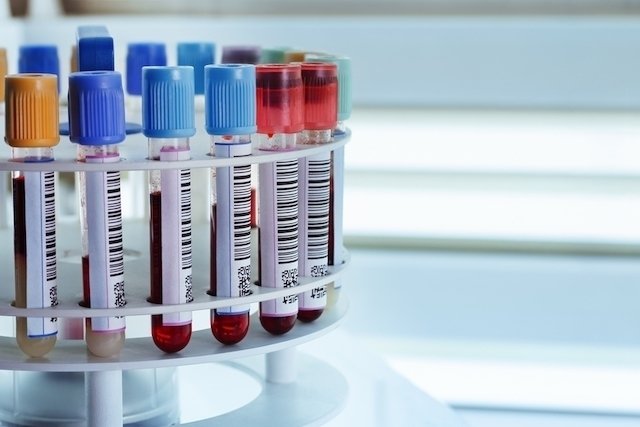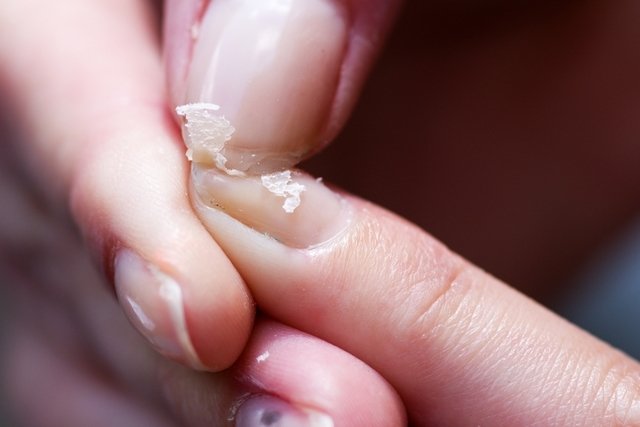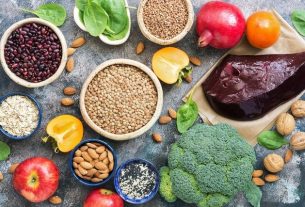Iron deficiency anemia is a type of anemia that occurs due to a lack of iron in the body, which reduces the amount of hemoglobin and, consequently, red blood cells, which are the blood cells responsible for transporting oxygen to all tissues in the body. Thus, there are symptoms such as weakness, discouragement, easy tiredness, pale skin and a feeling of fainting, for example.
Treatment for iron deficiency anemia is through iron supplementation for approximately 4 months and a diet rich in foods that contain iron, such as black beans, meat and spinach, for example.
This disease is serious and can put a person’s life at risk when hemoglobin values are below 11 g/dL for women and 12 g/dL for men. This is potentially serious because it could prevent any necessary surgery from being carried out.

Symptoms of iron deficiency anemia
The main symptoms of iron deficiency anemia are:
- Tiredness;
- Generalized weakness;
- Somnolence;
- Difficulty exercising;
- Dizziness;
- Feeling dizzy or faint;
- Pallor of the skin and mucous membranes of the eyes;
- Difficulty concentrating;
- Memory lapses;
- Headache;
- Weak and brittle nails;
- Dry skin;
- Leg pain;
- Swelling in the ankles;
- Loss of hair;
- Lack of appetite.
Initially, iron deficiency anemia presents subtle symptoms that are not always noticed by the person, but as the lack of iron in the blood worsens, the symptoms become more apparent and frequent.
Symptom Test
To find out your risk of having anemia, select the symptoms you may be experiencing in the symptom test below:
The symptom test is only a guidance tool and does not serve as a diagnosis or replace a consultation with a doctor.
Main causes
The main cause of iron deficiency anemia is a diet low in iron, which can occur even in people who are within their ideal weight or overweight, and is more likely to occur in people who have unhealthy or vegetarian eating habits. Furthermore, a lack of iron can occur due to difficulty in absorbing iron by the body, which is what happens in the case of celiac disease or when a part of the intestine has been removed from the body.
The decrease in the amount of iron circulating in the body may also be due to continuous and prolonged blood loss within the digestive system, which is a common cause in cases of hernias or stomach ulcers, for example. However, heavy menstruation or breakthrough bleeding that persists for more than 8 days can also cause iron deficiency.
During pregnancy, it is normal for women to have low concentrations of iron in their blood, this is because the woman’s body prioritizes the development of the baby, which means that the stores and iron present are directed towards the development of the fetus.
How the diagnosis is made
The diagnosis of iron deficiency anemia is made through a blood count, which mainly observes the amount of hemoglobin and the values of RDW, MCV and HCM, which are indices present in the blood count, in addition to the measurement of serum iron, ferritin, transferrin and saturation. of transferrin.
The main parameter used to confirm anemia is hemoglobin, which in these cases is:
- Less than 13.5 g/dL for newborns;
- Less than 11 g/dL for babies up to 1 year old and pregnant women;
- Less than 11.5 g/dL for children;
- Less than 12 g/dL for adult women;
- Less than 13 g/dL for adult men.
Regarding parameters related to iron, iron deficiency anemia is perceived by a decrease in serum iron and ferritin and an increase in transferrin and transferrin saturation. Find out about other tests that confirm anemia.
Treatment for iron deficiency anemia
The treatment of iron deficiency anemia must be carried out according to its cause and normally includes the use of 60 mg of iron supplement per day, in addition to the consumption of foods rich in iron such as lentils, parsley, beans and red meat, for example. See how to make a diet rich in iron.
Eating foods rich in vitamin C enhances iron absorption. On the other hand, there are some foods that impair iron absorption, such as tannins and caffeine found in coffee and the oxalate present in chocolate. Thus, the best dessert for those with anemia is an orange, and the worst are coffee and chocolate.
The treatment must be indicated by the doctor and the diet can be guided by a nutritionist, and it is important to repeat the tests 3 months after starting the treatment, because excess iron can harm the liver.

Sign up for our newsletter and stay up to date with exclusive news
that can transform your routine!
Warning: Undefined array key "title" in /home/storelat/public_html/wp-content/plugins/link-whisper-premium/templates/frontend/related-posts.php on line 12
Warning: Undefined array key "title_tag" in /home/storelat/public_html/wp-content/plugins/link-whisper-premium/templates/frontend/related-posts.php on line 13




